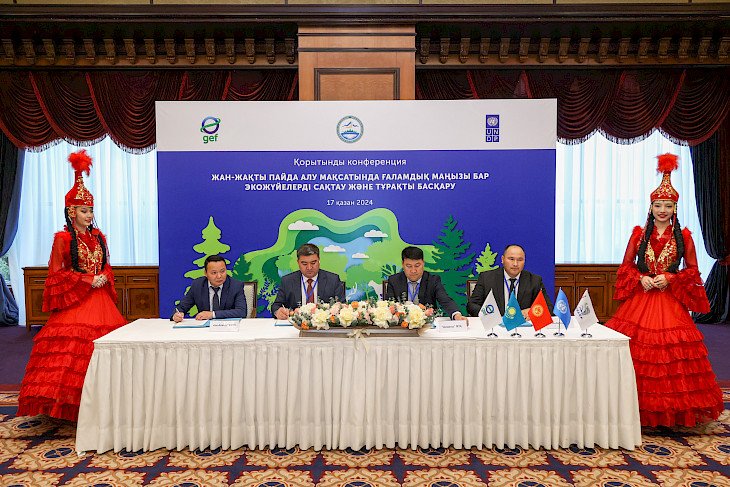Bishkek, Oct 17, 2024. /Kabar/. A memorandum of understanding was signed today between the specially protected nature areas of the Republic of Kazakhstan and the Kyrgyz Republic on the conservation of the snow leopard. The aim of this cooperation is to conserve the snow leopard and its habitats in the northern Tien Shan Mountains within four Specially Protected Nature Areas (SPNAs) of two countries: the Kolsay Kolderi State National Park, the Almaty State Nature Reserve, the Ile-Alatau State National Park of the Republic of Kazakhstan, and the Chon Kemin State Nature Park of the Kyrgyz Republic.
The memorandum will enable the SPNAs of the two countries to coordinate joint actions and share experiences in researching, strengthening protection and monitoring of the snow leopard, as well as restoring and maintaining the population of the predator in a stable state.
"Today, the number of snow leopards in Kazakhstan is on the rise. Thanks to joint efforts to study and protect the snow leopard, its population in the country has increased by more than 20 percent since 2019 and is currently between 152and 189 animals. This memorandum will strengthen the links between our countries to conserve this globally important species. We are also planning a number of initiatives to improve environmental protection and share experience and scientific knowledge," said Nurken Sharbiyev, Vice Minister of Ecology and Natural Resources of the Republic of Kazakhstan.
The parties are expected to develop and implement a number of initiatives over the next five years to monitor the snow leopard, its habitats and food supply, promote transboundary and international cooperation, and increase public awareness and participation in snow leopard conservation programmes.
"The Kyrgyz Republic is an active participant in global wildlife conservation programmes. Currently, more than 400 snow leopards live on the territory of our country. As it is a migratory species, its habitat is not limited to the territory of the country. In order to study and preserve the snow leopard and its habitat, prevent the impact of serious threats such as illegal hunting, reduction of food supply and habitats due to human activities, interaction between stakeholders is needed, which will be facilitated by the implementation of measures under the signed memorandum between the SPNR of Kazakhstan and the Kyrgyz Republic," noted Mirslav Amankulov, Vice Minister of Natural Resources, Ecology and Technical Supervision of the Kyrgyz Republic.
This five-year agreement was initiated by the United Nations Development Programme (UNDP) in Kazakhstan with the support of the Global Environment Facility (GEF) as part of the six-year project (2018-2024) on the conservation of forest ecosystems and biodiversity, including the snow leopard in Kazakhstan.
The memorandum was signed with the participation of the Global Snow Leopard & Ecosystem Protection Programme (GSLEP), which brings together all 12 countries where the predator lives and advocates for increased attention from the global community for the protection and recovery of the rare species in the world.
